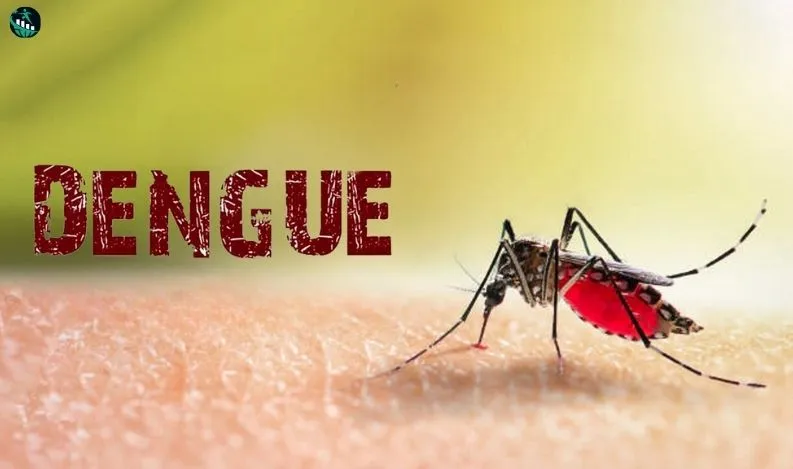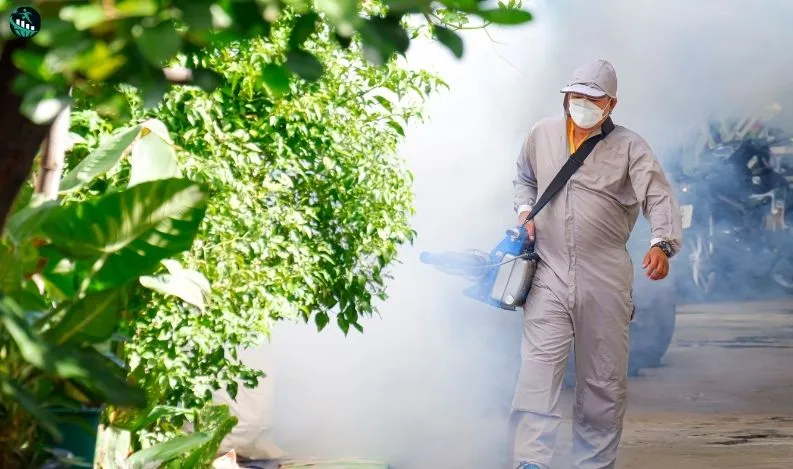
Dengue and Severe Dengue: An In-Depth Guide
Dengue, commonly known as break-bone fever, is a viral infection that poses significant health risks worldwide, particularly in tropical and subtropical regions. This comprehensive guide provides detailed information about dengue, covering its causes, symptoms, diagnosis, treatment, prevention strategies, and the World Health Organization (WHO) response.
Key Facts
Transmission: Dengue is a viral infection spread through the bite of infected Aedes mosquitoes.
Risk: Approximately half of the world's population is at risk, with an estimated 100-400 million infections each year.
Geographical Prevalence: Dengue is found in tropical and sub-tropical climates, mostly in urban and semi-urban areas.
Symptoms: While many infections are asymptomatic or mild, severe cases can occur, leading to serious health complications or death.
Control: Prevention and control rely heavily on vector control, as there is no specific treatment for dengue. Early detection and access to medical care significantly reduce fatality rates.
Overview
What is Dengue?
Dengue, also known as break-bone fever, is a viral infection transmitted by mosquitoes, primarily Aedes aegypti. The virus is prevalent in tropical and subtropical climates worldwide, especially in urban and semi-urban areas. Most people with dengue do not exhibit symptoms, but those who do can experience high fever, headache, body aches, nausea, and rash. Recovery usually occurs within 1-2 weeks, but severe cases may require hospitalization and can be fatal.
Key Points:
Transmission: Primarily through the bite of infected Aedes mosquitoes.
Symptoms: Range from mild to severe, with severe cases requiring urgent medical attention.
Prevention: Avoiding mosquito bites is crucial, especially during the day when Aedes mosquitoes are most active.
Symptoms of Dengue
Mild Symptoms
Most people with dengue exhibit mild symptoms or none at all, recovering within 1-2 weeks. When symptoms do occur, they typically start 4-10 days after infection and last for 2-7 days. Common symptoms include:
High Fever: Often reaching up to 40°C (104°F).
Severe Headache: Intense pain, often felt behind the eyes.
Pain Behind the Eyes: A characteristic symptom of dengue.
Muscle and Joint Pains: Severe pain that gave dengue the nickname 'break-bone fever.'
Nausea and Vomiting: Common gastrointestinal symptoms.
Swollen Glands: Enlarged lymph nodes.
Rash: Appears a few days after the fever starts.

Severe Dengue
Severe Dengue Symptoms
Severe dengue, also known as dengue hemorrhagic fever or dengue shock syndrome, can develop after the initial fever subsides. Symptoms of severe dengue include:
Severe Abdominal Pain: Persistent and intense.
Persistent Vomiting: Frequent and severe vomiting.
Rapid Breathing: Indicative of respiratory distress.
Bleeding Gums or Nose: Signs of hemorrhage.
Fatigue and Restlessness: Extreme tiredness and irritability.
Blood in Vomit or Stool: Visible signs of internal bleeding.
Extreme Thirst: Due to dehydration.
Pale and Cold Skin: Symptoms of shock.
Weakness: Severe physical debilitation.
Individuals experiencing these severe symptoms should seek immediate medical attention, as severe dengue can be life-threatening.
Causes and Risk Factors
Transmission
Dengue is transmitted to humans through the bite of infected female mosquitoes, primarily Aedes aegypti and, to a lesser extent, Aedes albopictus. After a mosquito feeds on an infected person, the virus replicates in the mosquito's midgut before disseminating to secondary tissues, including the salivary glands. Once infected, mosquitoes can transmit the virus for the rest of their lives.
Human-to-Mosquito Transmission
Mosquitoes can become infected by biting a person with dengue, even if they are asymptomatic or pre-symptomatic. The risk of mosquito infection is higher in individuals with high viremia and high fever.
Other Modes of Transmission
Maternal Transmission: From a pregnant mother to her baby, which can lead to pre-term birth, low birth weight, and fetal distress.
Blood Products and Organ Donation: Rare cases of transmission through blood transfusions and organ donations have been recorded.
Risk Factors
Previous Infection: Having had dengue before increases the risk of developing severe dengue.
Urbanization: Unplanned urbanization can facilitate dengue transmission through factors like high population density, inadequate water management, and poor waste disposal.
Environmental Factors: Climate change, increased temperatures, high rainfall, and humidity can influence the spread of dengue.
Social Factors: Lack of awareness and inadequate community participation in vector control measures can exacerbate the spread of dengue.
Diagnosis and Treatment
Diagnostics
There is no specific treatment for dengue, so diagnosis focuses on identifying the presence of the virus through various methods:
Blood Tests: To detect dengue virus or antibodies. Common tests include NS1 antigen tests, PCR tests, and IgM/IgG antibody tests.
Clinical Assessment: Based on symptoms and patient history. Healthcare providers look for the classic signs of dengue and assess the severity of the symptoms.
Treatment
Pain Management: Acetaminophen (paracetamol) is used to control pain and reduce fever. Non-steroidal anti-inflammatory drugs (NSAIDs) like ibuprofen and aspirin are avoided due to the risk of bleeding.
Hydration: Maintaining fluid intake is crucial to prevent dehydration. Oral rehydration solutions (ORS) are often recommended.
Rest: Patients are advised to rest and avoid strenuous activities until they recover.
Hospitalization: Severe cases often require hospitalization for intravenous fluids and close monitoring. Patients may need blood transfusions and intensive care in extreme cases.
Global Burden
Incidence and Spread
The incidence of dengue has increased dramatically in recent decades. According to the World Health Organization (WHO), reported cases surged from 505,430 in 2000 to 5.2 million in 2019. The actual number of cases is likely higher due to underreporting and misdiagnosis.
Regions Affected
Dengue is endemic in more than 100 countries across the WHO regions of Africa, the Americas, the Eastern Mediterranean, South-East Asia, and the Western Pacific. The Americas, South-East Asia, and Western Pacific regions bear the brunt of the global disease burden, with Asia accounting for approximately 70% of cases.
Recent Trends
In 2023, over 6.5 million cases and more than 7,300 dengue-related deaths were reported globally, the highest number on record. The surge was attributed to factors such as climate change, increased urbanization, and the effects of the COVID-19 pandemic on health systems.
Factors Contributing to Spread
Vector Distribution: The spread of Aedes mosquitoes to new areas due to climate change and urbanization.
Environmental Changes: Increased temperatures and rainfall create favorable conditions for mosquito breeding.
Health System Challenges: Fragile health systems and the impact of the COVID-19 pandemic on healthcare resources.
Population Movement: High population movement and unplanned urbanization contribute to the spread of dengue.
Prevention and Control
Personal Protection
Lowering the risk of dengue involves protecting yourself from mosquito bites by:
• Wearing Protective Clothing: Cover as much of your body as possible.
• Using Mosquito Nets: Especially during the day, ideally nets treated with insect repellent.
• Installing Window Screens: To keep mosquitoes out of living spaces.
• Applying Mosquito Repellents: Containing DEET, Picaridin, or IR3535.
• Using Coils and Vaporizers: To repel mosquitoes indoors.
Environmental Management
Preventing mosquito breeding is crucial:
• Removing Standing Water: Dispose of solid waste properly and eliminate artificial containers that can hold water.
• Water Storage Practices: Cover, empty, and clean domestic water storage containers weekly.
• Insecticides: Apply appropriate insecticides to outdoor water storage containers.
Community Engagement
Community participation is essential in vector control:
• Education and Awareness: Informing communities about dengue prevention and control measures.
• Community Clean-Up Campaigns: Regular activities to eliminate mosquito breeding sites.
• Routine Surveillance: Monitoring mosquito populations and dengue cases to respond promptly to outbreaks.
Vaccination
Currently, one vaccine (QDenga) has been approved and licensed in some countries for use in children aged 6-16 years in high transmission settings. Several additional vaccines are under evaluation.
WHO Response
Support and Guidance
WHO provides various forms of support to countries affected by dengue, including:
• Outbreak Confirmation: Through its network of collaborating laboratories.
• Technical Assistance: For effective management of dengue outbreaks.
• Reporting Systems: Improving countries' ability to capture the true burden of the disease.
• Training: On clinical management, diagnosis, and vector control.
• Policy Formulation: Evidence-based strategies and policies for dengue prevention and control.
• Tool Development: Supporting the development of new insecticides and application technologies.
• Surveillance: Gathering official records of dengue from over 100 Member States.
Global Initiatives
• Global Vector Control Response (2017-2030): A strategy to strengthen vector control worldwide.
• Global Arbovirus Initiative (2022-2025): Focuses on improving the response to arboviruses, including dengue.
Conclusion
Dengue is a significant global health challenge that requires coordinated efforts for prevention and control. Understanding the symptoms, causes, diagnosis, and treatment options is crucial for managing the disease effectively. Personal protection measures, environmental management, and vaccination are key strategies in reducing the risk of dengue. The WHO plays a vital role in supporting countries to manage and control dengue outbreaks, ultimately aiming to reduce the global burden of this disease.
By staying informed and taking proactive steps, individuals and communities can help mitigate the impact of dengue and contribute to global health efforts.
Also Read:-



Recent Comments: